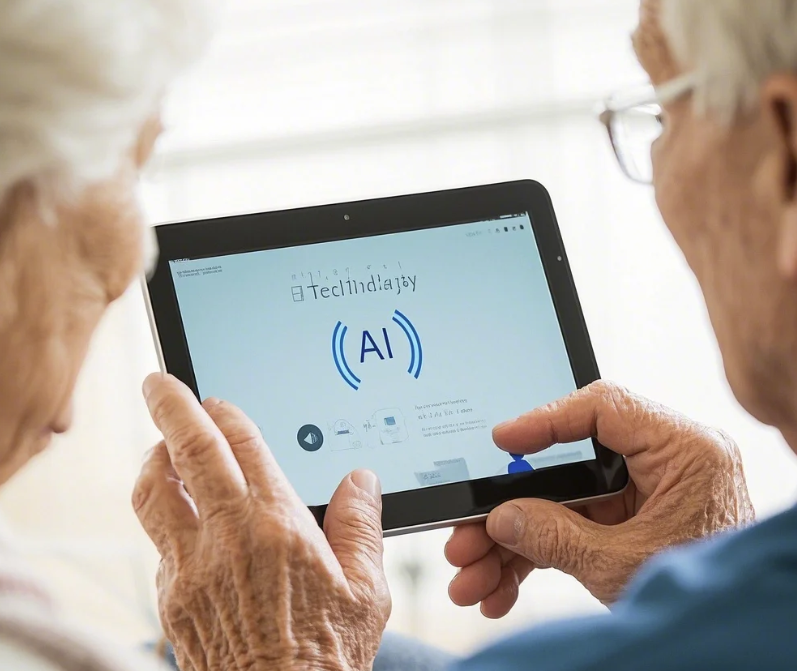Artificial Intelligence (AI) is reshaping the world, but not everyone is jumping on the bandwagon. For older generations, AI can seem intimidating, unnecessary, or even outright confusing. Many seniors feel resistant to learning AI, citing reasons like "It’s too complicated," "I don’t need it," or "I don’t trust it." But let’s be honest—AI isn’t just for tech-savvy millennials or Gen Z. It’s for everyone.
This article dives into real AI tools designed to help seniors overcome their resistance, learn AI in a simple and approachable way, and even enjoy the process. If you’re someone looking to introduce AI to your parents or grandparents—or if you’re a senior yourself—this guide is for you.


Before we dive into the tools, let’s address the elephant in the room: why do seniors resist AI in the first place? Here are the most common reasons:
Fear of Complexity: Many older adults believe AI requires advanced tech skills they don’t have.
Trust Issues: AI feels like something out of a sci-fi movie—too futuristic, too invasive.
“Why Do I Need This?” Mentality: Seniors often feel their current way of doing things works just fine.
Lack of Exposure: If no one introduces them to AI in a relatable way, how can they learn to use it?
But here’s the truth: AI can simplify their lives. From managing daily tasks to staying connected with loved ones, AI tools can be life-changing—if presented the right way.
These AI tools are designed to be user-friendly, intuitive, and practical, making them perfect for older generations.
What It Does: ElliQ is an AI-powered robot companion specifically designed for older adults. Think of it as a friendly assistant that helps with everything from reminders to health tracking—without overwhelming the user.
Why It Works for Seniors:
It uses natural language, so seniors can simply talk to ElliQ.
It provides gentle nudges for activities like drinking water, taking medications, or staying active.
ElliQ’s conversational tone makes it feel less like a machine and more like a companion.
How to Introduce It: Show seniors how ElliQ can help them stay independent and connected. For example, “ElliQ can remind you to take your pills every morning—you don’t even have to set a timer anymore!”
What It Does: Alexa is one of the most popular AI tools, and its voice-activated features make it perfect for seniors who may struggle with touchscreens or keyboards.
Why It Works for Seniors:
Easy voice commands like “Alexa, what’s the weather today?” or “Alexa, call Susan.”
Integration with smart home devices (e.g., lights, thermostats) simplifies daily routines.
Seniors can use it to play their favorite music, set reminders, or even listen to audiobooks.
How to Introduce It: Start small. For example, show them how Alexa can play their favorite Frank Sinatra song with a simple command. Once they see how easy it is, they’ll want to explore more features.
What It Does: Lumosity is an AI-powered app that offers brain-training games tailored to each user’s cognitive abilities.
Why It Works for Seniors:
The games are simple yet engaging, helping seniors improve memory, focus, and problem-solving skills.
It’s not just about learning AI—it’s about keeping their minds sharp.
Seniors often enjoy the gamified experience, which feels less like “learning” and more like fun.
How to Introduce It: Highlight how Lumosity can help them stay mentally active. For example, “You can play these games while waiting for your coffee to brew—it’s like a mental workout!”
What It Does: Google Assistant is a voice-activated AI tool that works on smartphones and smart devices.
Why It Works for Seniors:
It answers questions, sets reminders, and even provides directions.
Seniors can use it to send texts or make calls without typing.
It’s already integrated into most Android devices, so no extra setup is required.
How to Introduce It: Show them how Google Assistant can simplify everyday tasks. For example, “You can ask it to remind you about your doctor’s appointment—you don’t even need a calendar!”
What It Does: YouTube isn’t just for entertainment—it’s a treasure trove of free tutorials, including beginner-friendly AI lessons.
Why It Works for Seniors:
They can watch videos at their own pace.
There are countless channels dedicated to explaining AI in simple terms.
Seniors can explore topics they’re genuinely interested in, like “How does AI help with health?”
How to Introduce It: Find a relatable video, like “AI for Beginners,” and watch it together. Encourage them to ask questions and explore more videos on their own.
Getting seniors to embrace AI isn’t just about the tools—it’s about the approach. Here are some tips:
Start Small: Introduce one tool at a time. Don’t overwhelm them with too many features.
Make It Relatable: Show how AI can solve problems they care about, like reminders or staying connected.
Be Patient: Learning something new takes time, especially for older adults.
Celebrate Wins: Encourage them when they successfully use an AI tool, no matter how small the task.
AI isn’t just a tech trend—it’s a way to enhance quality of life. For seniors, AI can:
Improve Independence: Tools like ElliQ or Alexa help them manage daily tasks without relying on others.
Stay Connected: AI-powered tools make it easier to communicate with family and friends.
Boost Cognitive Health: Apps like Lumosity keep their minds active and engaged.
By breaking down barriers and introducing AI in a relatable way, we can help seniors embrace the future rather than fear it.
See More Content about AI tools